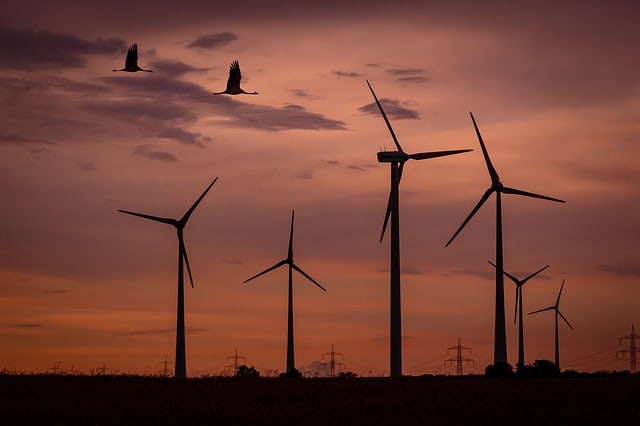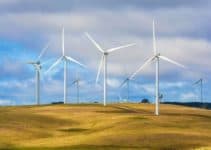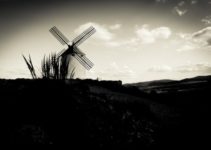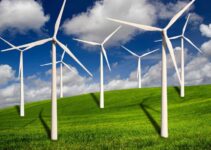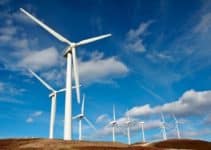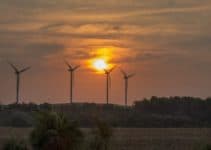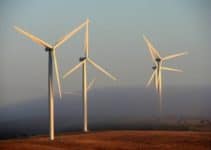Finding green sources of energy in the modern world is steadily increasing due to profound impacts of fossil fuels including global warming, climate change, air quality deterioration, acid rains and oil spills. Solar and wind energy are the two biggest players in the green energy world. Almost everyone understands what solar energy is. However, wind energy is the least explored subject among the populace.
When wind blows, we call it energy from the wind. To understand wind energy better, it would be beneficial to get attuned to its nature and where it stems from. That way, you can be able to recognize the challenges and benefits of utilizing it.
Wind energy is a kind of kinetic energy, or simply energy in motion brought about by the sun’s effect on the atmosphere. Naturally, the sun rays unevenly heat the atmosphere. The entire heating process, in conjunction with the earth’s rotation, produces wind that disperses throughout the different earth surfaces. The same wind can be harnessed to rotate turbines, consequently, generating electricity.
In other words, winds are caused by uneven heating of the atmosphere by the sun, the roughness of the Earth surface and Earth’s rotation. Winds flow patterns are changed by the topography of land, water and plants. Modern wind turbines use this flow of air to generate electricity. We, humans, use this wind flow for various purposes e.g.: generating electricity, drying clothes, sailing etc.
Wind energy today is the cleanest and most reliable way to generate electricity. Wind power neither produces any toxic emissions nor any heat-trapping emissions that contribute to global warming. The fact that wind energy is most widely available, abundant and increasingly cost-competitive energy resources, making it a viable alternative to fossil fuels that harm our health and threaten the environment .
The term wind power describes the process by which wind is used to make the mechanical energy or electricity. Wind turbines convert the kinetic energy of wind energy into mechanical power.
This mechanical power may be used for certain activities (such as milling of rice or pumping water) or a generator can convert mechanical energy to electrical energy at home, business, schools or other facilities.
How Do Wind Turbines Work?
Before we look at how a turbine generates electricity, it would be helpful to know the types and components of a turbine.
Types of Wind Turbines
Modern wind turbines fall into two basic groups; the horizontal-axis rotor, like the traditional farm windmills used for pumping water, and the vertical-axis rotor, like the eggbeater-style Darrieus model, named after its French inventor. Most large modern wind turbines are horizontal-axis turbines.
The most common is the horizontal axis rotor, which quintessentially, comes along with three blades. Three blade turbines operate ‘’upwind” (Blades facing into the wind). A turbine can be installed on land or off the shore in huge water bodies such as lakes and oceans. The offshore wind turbine is a new technology lacking in most countries; however, the countries’ respective energy departments are working around the clock to make the technology available. The United States, nonetheless, recently launched its first offshore turbine.
Components of a Wind Turbine
- Rotor and rotor blades
The rotor is a vital component of a turbine because, with the assistance of the blades, it’s responsible for converting the kinetic energy in wind into the rotational mechanical movement. Rotor blades are usually made of carbon fiber, or glass fiber reinforced plastics. The turbine blade’s profile mimics that of an airplane wing.
- Nacelle (consists of a drive train)
The nacelle pretty much holds the nerve center of the turbine, which consists of the gear box, generator, electronic equipment, coupling and brakes and other components. It must be connected to the tower through bearing so that it rotates to follow the direction of the wind.
- Tower and foundation
To assure stability of a turbine, a foundation is built in regard to the underlying ground’s consistency. The tower construction must be able to bear the weight of the rotor blades and nacelle. It must also be able to absorb the massive static loads instigated by the ever-changing wind power.
The working of a wind turbine is the exact opposite of a fan. In a fan, generated electricity is used to produce wind. On the other hand, turbines utilize wind to generate electricity.
The generator produces electricity using the same principle as a generator of your car (depending on the turbine). The powerful kinetic energy in wind rotates the turbine blades, which eventually spins the shaft connected to the generator. The generator leverages the shaft’s spinning motion to revolve a rotor, which consists of charged magnets situated opposite each other. The rotor is also encircled with copper wire loops. Magnetic Rotor inside the generator on high speed shaft spins inside loops of copper wire that are wound around an iron core. The spinning rotor creates an “electromagnetic induction” as it spins around the inside of the core through the coils that produces electricity. The wind can also be used as a mechanical power to undertake tasks like grinding grain or pumping water in homes and commercial establishments.
After electricity generation, the next stage is distribution. The generated electricity must pass through a transformer to beef up its voltage and enable it to be transported over long distances. The current is received by fuse boxes and power stations, which convert it to a much lower voltage that allows for safe use in homes and commercial establishments.
Advantages of Wind Energy
- Wind energy is eco-friendly
Wind energy generates electricity without emission of carbon dioxide, which pollutes the environment and can alter the climate. It’s a clean source of fuel since it produces electricity without the dangerous environmental pollutants that emanate from burning of coal, for instance, sulfur and nitrogen, which can result in mercury, acid rains, and many other pollutants.
- Wind energy is relatively inexpensive
The fact that it is renewable makes it a cost effective source of energy in the modern world. Wind energy costs generally range from 4 to 6 cents per kilowatt/hour. This, however, depends on the wind resource and specific financing.
- Wind energy has enabled electricity reach in remote locations
The advent of wind power enabled the powering of remote locations, for example, remote countryside and mountain communities, which has led to mushrooming of economic activities.
- It’s a steady and reliable source of electricity
Winds are brought about by the sun heating the atmosphere, earth’s surfaces irregularities and earth’s rotation. This, ideally, means that as long as wind blows and the sun shines, energy produced will continually be tapped to produce electricity. When complimented with solar electricity, wind energy is a great resource for both developed and developing countries to guarantee steady and reliable source of electricity.
- Wind turbines take up less space
The average power station takes up a lot more space than a wind turbine, meaning, it can be built on existing farm or ranch. This is a great victory for rural dwellers as the economy is boosted. Ranchers and farmers can go on working on their farms since the wind turbine takes up just a fraction of the farm. Individuals or organizations building turbines also remit payments to landowners and ranchers guaranteeing them a form of income.
- Wind energy contribute to job creation
According to the Wind Vision Report, over $8 billion of private equity was invested in the U.S. wind sector in 2014 alone. This contributed more than 73, 000 jobs in the economy. By 2050, the same report projects that wind energy will be able to support over 600,000 jobs in different sectors.
Disadvantages of Wind Energy
- Wind energy is variable
Not all areas are ideal for wind turbine installation. Wind patterns change every single day (not all days are windy). Because of the variable nature of wind energy, it can’t be relied upon as a sole source of energy.
Wind turbines may interfere with the natural beauty of the landscape and cause noise pollution
Most farmers and ranchers may resist the installation of turbines due to fear that they may affect the natural aesthetics of the surrounding environment. Although turbines have a lot less impact on the environment compared with traditional power plants, concerns remain over noise produced by turbines and visual effects on the landscape. In fact, the noise emanating from commercial turbines can be equated to a small jet engine.
- Turbine blades can pose great danger to local bird species
Many reports of bird deaths as a result of hitting spinning blades have been received over the years. The Wind turbine owners and manufacturers have tried to mitigate the problem by correctly siting turbines and embracing technological advancements. Despite all these efforts, bird deaths are still occurring, which threatens to wipe out certain bird species.
- The initial infrastructure is costly
It is a fact that remarkable wind sites are situated far away from cities where the most electricity is required. In addition to turbine installation, huge costs of distributing electricity to cities must be met.
Wind energy produce a lot less electricity compared to fossil fuel power station. Although wind energy is a clean source of fuel, fossil fuel still beats it regarding electricity generation capacity.
Wind turbines which are a part of renewable energy has been playing significant role in reducing our dependency on fossil fuels by offering some great solutions to generate electricity. Wind energy produces over 20% of electricity in some countries.
Scientists predict that this percentage will increase in the coming years as more and more countries will allocate part of their budget in increasing their reliance on these renewable energy sources thereby reducing pollution levels and global warming. This is all part of the fight to reduce global warming induced climate change and reduce our dependence on fossil fuels.
